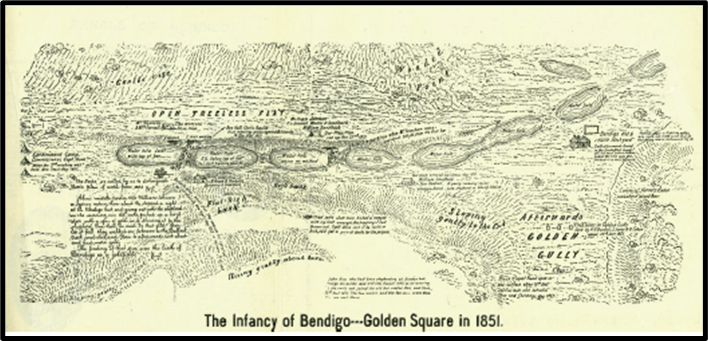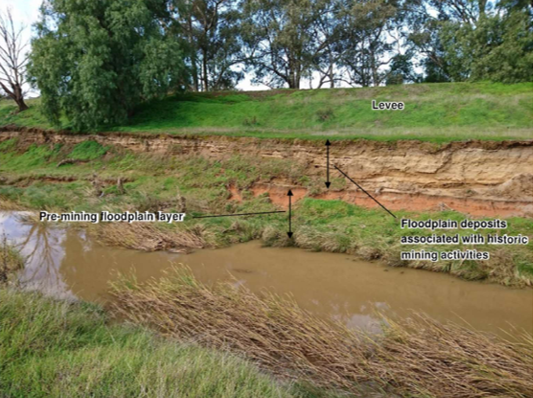P: +61 3 9867 6590
E: info@huntlycommon.com.au
History
From divine to devastation
The Bendigo Goldfields
By the late 1850s, on the Bendigo Goldfields of Victoria, Australia, there were 10,000 men and 5,000 horses working 2,000 puddling machines, pouring out millions of tonnes of sludge from alluvial mining sediment each year, choking the Bendigo Creek.
This clay-like sludge spilled out onto the floodplain, substantially changing its soil structure by burying the original rich, organic soil by deposits. It even contained contaminants including arsenic and mercury, which remain there to this day.
The creek went from natural watercourse to contaminated floodplain, with widespread devastation and destruction of adjacent property and livelihoods.
The “Sludge Royal Commission”
Victoria’s gold rush created some of the world’s largest goldfields and contributed substantially to the state’s wealth and economy, but it has left behind ecological contamination in the form of layers of gold tailings, containing high levels of arsenic and mercury, which flooded and settled in and around the creeks of greater Bendigo, pitting prime farmland farmers against miners.
An ensuing Royal Commission (1859) documented extensive ecological damage to creek and surrounding plains, noting "a hard-setting clay sludge layer that has severely disrupted natural drainage patterns and buried soils". A further detriment, because tailings spread into and over natural creeks, has been the ongoing risk of flooding and loss of water access to adjacent areas.
The Royal Commission also presciently noted that some gold was carried away by the sludge and that, one day, “the sandy deposit will have to be removed by manual labour from the sludge channel” and will “be made to contribute to some extent towards the expenses of maintenance of the channel” – the very solution that Huntly Common is proposing today.
The Predicament at Huntly Streamside Reserve
At some points in the Reserve, the sludge remains up to three metres deep. To this day, it continues to present ecological and environmental problems.
Aside from contamination of the soil, evidence of degradation from past land use is evident in the condition of the vegetation. Large areas within the Reserve have very little remaining native understorey and are dominated by exotic vegetation. Current land uses are continuing to degrade habitat values, including:
- Unrestricted access for four-wheel driving;
- Soil disturbance from harvesting of moth and beetle larvae (e.g., bait for fishing);
- Illegal firewood collection; and
- Shooting (many cartridge shells can be observed at the site).
The Reimagining Bendigo Creek Plan describes how the landform of this section of the Bendigo Creek has been altered, with steeply sided banks, as a result of the mobilisation of sediments from mine tailings during the Gold Rush era.
More recently, approximately 23ha of native vegetation patch and additional areas of exotic vegetation were burned in January 2020.
Local Landcare groups have been actively and dedicatedly involved in rehabilitating, enhancing and protecting the biodiversity values at the Reserve through a number of projects including nest box installation and monitoring, revegetation, weed control and small grazing exclusion plots. These efforts, however, leave the sludge in place, and cannot restore the wetlands, which would be a greatly richer habitat for a biodiverse ecosystem.
Left unmanaged would mean sacrificing potential gains for the environment, the community, and for the land’s Traditional Owners, as well as maintaining an elevated risk of flooding, elevated levels of arsenic and mercury while the creek’s banks continue to erode, and, as water is conveyed quickly, depriving the area of its availability.


